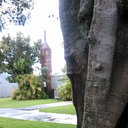[A multicenter clinical trial of caffeic acid tablet in treatment of 103 primary immune thrombocytopenia patients].
Keywords
Abstract
OBJECTIVE
To determine the efficacy and safety of oral caffeic acid (CA) tablet in management of primary immune thrombocytopenia(ITP).
METHODS
One hundred and three ITP patients with PLT>10×10⁹/L and no serious bleeding symptoms from three centers were enrolled. According to their platelet count before CA treatment, these patients were divided into group A (PLT<30×10⁹/L), including 24 females and 27 males with median age 48(18-84)years; and group B (PLT≥30×10⁹/L), including 33 females and 19 males with median age 43(18-83)years. Patients in both groups took CA tablets orally of 300 mg three times per day for 12 consecutive weeks. Combined medicine treatment such as corticosteroids, danazol, TPO and Rituximab, which might increase the platelet count of these patients, were not allowed during CA therapy.
RESULTS
In group A, the overall response rate was 51.0%(26/51), with 2 patients achieving complete response (CR) and 24 patients achieving response(R). Of 26 patients achieving response (CR+R), the median platelet count before CA therapy was 20.5(15-28)×10⁹/L , and the median peak platelet count after CA therapy was 63(38-112)×10⁹/L. The median time to achieving response was 4(2-10) weeks. Patients with pretreatment PLT>20×10⁹/L showed significantly better response than those PLT<20×10⁹/L (68.0% vs 34.6%, P=0.017). In group B, the CR rate was 40.4%(21/52). Frequency of CA-related adverse events was 1.94%(2/103), including mild nausea in 1 case and elevation of liver enzymes in 1 case. Both were grade 1 and transient.
CONCLUSIONS
Caffeic acid was effective in patients with ITP with few and mild adverse effects.


